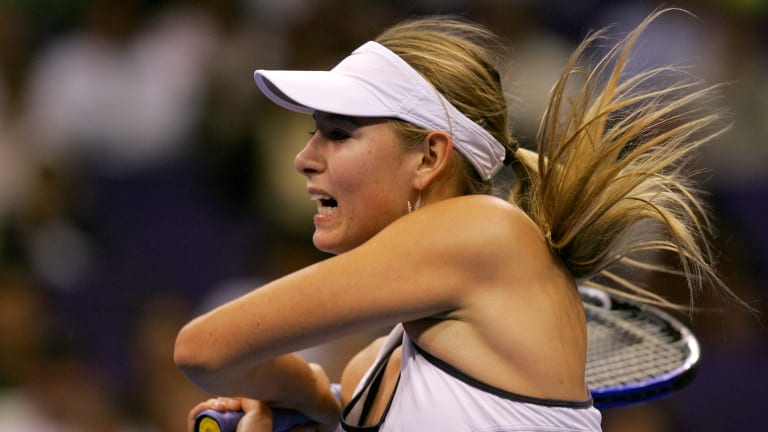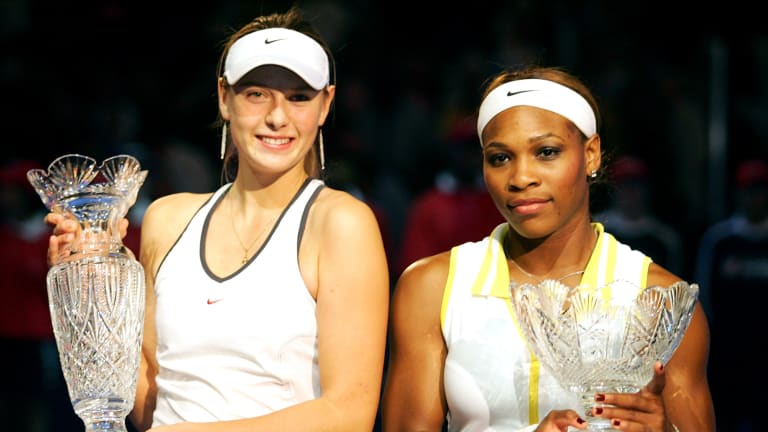In November 2004, Maria Sharapova was eager to cap off her breakthrough year with an exclamation point. She arrived in Los Angeles to play the WTA Tour Championships, the eight-player round-robin event that often conclusively determined who was the year’s best player.
Four months earlier, Sharapova had won Wimbledon, in her last two matches beating a pair of multiple Grand Slam winners, Lindsay Davenport and Serena Williams. It was a remarkable achievement for anyone, much less a 17-year-old playing Wimbledon for only the second time.
Since then, she’d won two tournaments. But those were smaller events, none of Sharapova’s opponents ranked in the top 60.
In the round-robin, Sharapova earned wins over a pair of her fellow Russians, world number eleven Vera Zvonareva and reigning US Open champion, Svetlana Kuznetsova. In the knockout semifinal stage, Sharapova beat another one of her compatriots, Roland Garros titlist Anastasia Myskina, 2-6, 6-2, 6-2.


